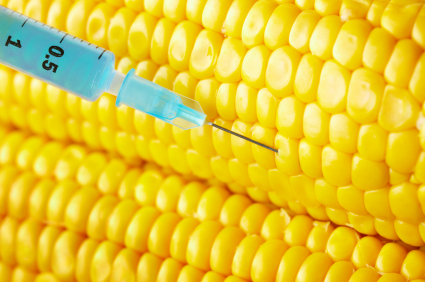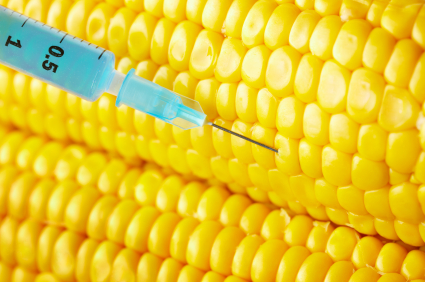 Better living through biotechnology? Pity executives at genetically modified seed giant Monsanto. Not only are they having to knock heads with Department of Justice lawyers over the company’s business practices, but some of their most-cherished PR talking points are being obliterated by researchers.
Better living through biotechnology? Pity executives at genetically modified seed giant Monsanto. Not only are they having to knock heads with Department of Justice lawyers over the company’s business practices, but some of their most-cherished PR talking points are being obliterated by researchers.
In the past few months, we’ve learned that its much-vaunted technologies don’t really increase yields after all; and aren’t really all that promising for adapting to climate change.
We’re also getting a trickle of information that calls into serious question the PR talking point on which the entire GMO seed industry hangs: that GMO products are safe to eat. This is a widely held assumption; but as Don Lotter showed in a recent paper in the International Journal of the Sociology of Food and Agriculture, there has actually been shockingly little research done on the long-term effects of eating GMO foods–and most of what has been was conducted by the industry itself.
The problem is that government funding for independent research on GMOs is scant–and industry funding is non-existent. And it’s extremely difficult for independent researchers to get their hands on GMO seeds without signing restrictive contracts with their patent holders, as the New York Times reported earlier this year.
The independent research that has been done on the health effects of GMOs paints an alarming picture. Here’s my discussion of the results of a multigenerational study, funded by the Austrian government, that came out last year on the effects of GMO corn on mice. Short story: in the third and fourth generations, mice fed GMOs showed “statistically significant” reproductive dysfunction.
And now comes this study by three French university researchers. It’s a fascinating piece of work. The researchers analyzed data from tests done on rats by Monsanto and another biotech firm, Covance Laboratories, submitted to European government in 2000 and 2001. The firms conducted the tests to prove that their products were safe to eat; scrutinizing the same data, the researchers arrived at a different conclusion.
The three products in question are still quite relevant: one strain of Roundup Ready corn, engineered to withstand Monsanto’s flagship herbicide; and two strands of Bt corn, engineered to contain the insect-killing gene from the BT bacteria. Roundup Ready and Bt products are ubiquitous in the U.S. seed supply, often “stacked” into the same seed.
Here’s what the researchers found:
in the three GM maize varieties that formed the basis of this investigation, new side effects linked to the consumption of these cereals were revealed, which were sex- and often dose-dependent. Effects were mostly concentrated in kidney and liver function, the two major diet detoxification organs, but in detail differed with each GM type. In addition, some effects on heart, adrenal, spleen and blood cells were also frequently noted. As there normally exists sex differences in liver and kidney metabolism, the highly statistically significant disturbances in the function of these organs, seen between male and female rats, cannot be dismissed as biologically insignificant as has been proposed by others [4]. We therefore conclude that our data strongly suggests that these GM maize varieties induce a state of hepatorenal [i.e., kidney] toxicity.
The researchers also found “clear negative impact” on their livers of rats fed all three kinds of GMO corn.
They added that it’s impossible to tell, based on the data, whether the damage was caused by the specific genes introduced to the corn, or–more troubling still–if the very process of genetic modification creates a toxic effect. And they call for more research:
In conclusion, our data presented here strongly recommend that additional long-term (up to 2 years) animal feeding studies be performed in at least three species, preferably also multi-generational, to provide true scientifically valid data on the acute and chronic toxic effects of GM crops, feed and foods.
Here’s hoping that governments find the will–and the courage–to find such research; it’s clear that industry won’t.
I want to acknowledge that one risks sounding like a fanatic or a “denier” when bringing the issue of GMOs and human health. Here’s why. Nearly our entire corn and soy crops crops are genetically modified–and have been for nearly a decade. Corn and soy course through the food system like blood in a body. If GMOs caused harm, wouldn’t it be obvious by now?
Moreover, most corn and soy goes into animal feed. Last I checked, pigs, chickens, and cows on factory animal farms haven’t been dropping dead en masse before their date with the executioner. Again, if GMOs were dangerous, why aren’t factory animal farmers rejecting them?
This thinking, I think, represents educated opinion on GMOs. The logic would be persuasive, if scientists were claiming that GMOs caused spectacular, virulent illnesses, the kind associated with, say, E. coli 0157 or salmonella. But instead, the evidence I’m referring to suggests that GMOs cause low-level, chronic damage.
And think of the U.S. diet. People here tend to survive on refined sugars and processed food, and are routinely exposed to toxic chemicals like BPA. Moreover, we have high and growing levels of chronic ailments. To me, it’s highly plausible that yet more low-level toxins could enter the food stream without causing immediately identifiable trouble.
As for animals on factory farms, their lives are by design short, nasty, and brutish. The game is to fatten them as quickly as possible for slaughter, not to make sure they’re feeling well. So, again, it seems plausible that subtly health-damaging feed could be intorduced without causing much of a stir.




